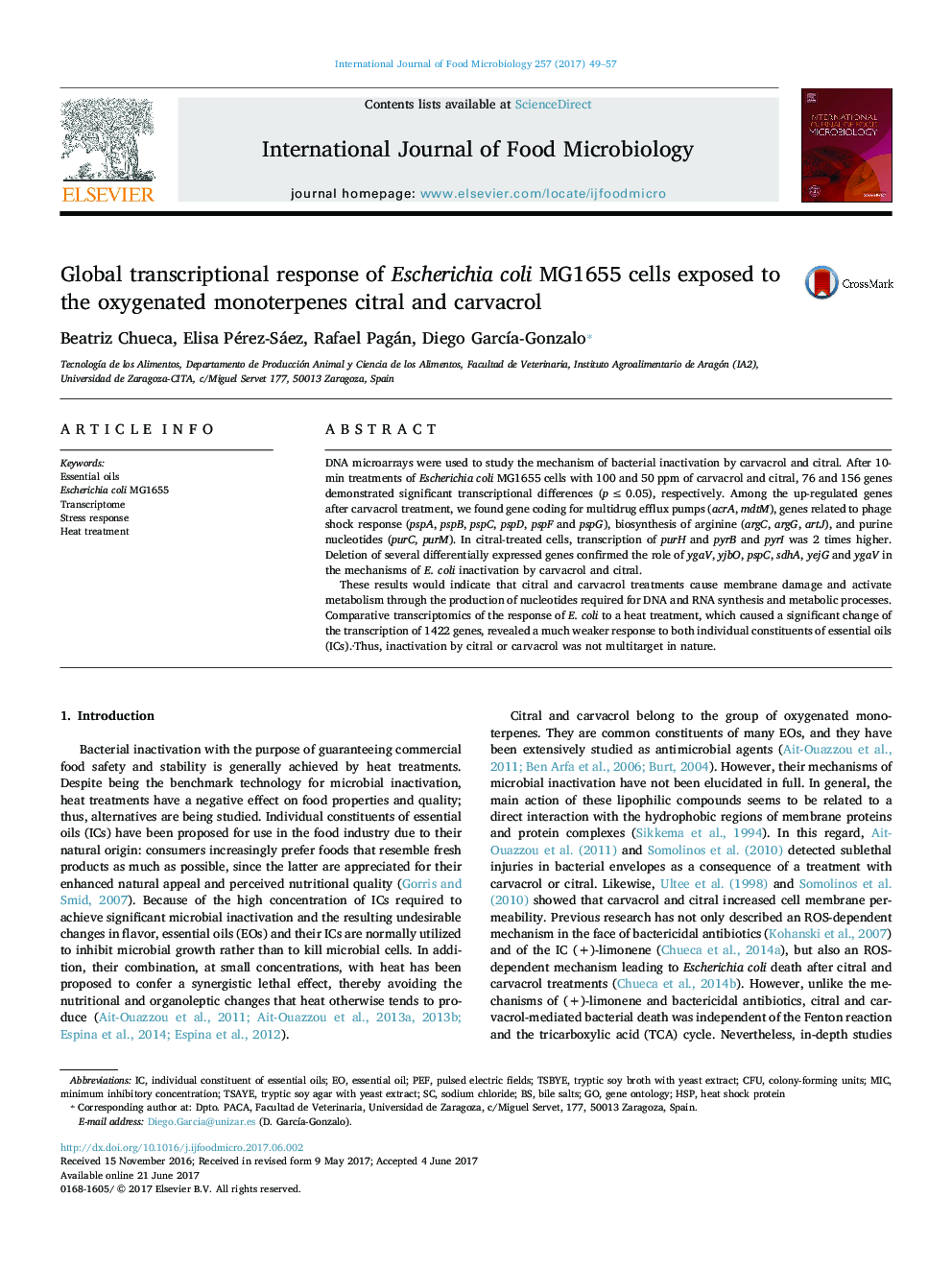| کد مقاله | کد نشریه | سال انتشار | مقاله انگلیسی | نسخه تمام متن |
|---|---|---|---|---|
| 5740655 | 1616526 | 2017 | 9 صفحه PDF | دانلود رایگان |

- Transcriptome responses to mildly lethal IC treatments were determined.
- ICs treatments activate DNA and RNA synthesis.
- ICs lack multitarget inactivation.
DNA microarrays were used to study the mechanism of bacterial inactivation by carvacrol and citral. After 10-min treatments of Escherichia coli MG1655 cells with 100 and 50 ppm of carvacrol and citral, 76 and 156 genes demonstrated significant transcriptional differences (p â¤Â 0.05), respectively. Among the up-regulated genes after carvacrol treatment, we found gene coding for multidrug efflux pumps (acrA, mdtM), genes related to phage shock response (pspA, pspB, pspC, pspD, pspF and pspG), biosynthesis of arginine (argC, argG, artJ), and purine nucleotides (purC, purM). In citral-treated cells, transcription of purH and pyrB and pyrI was 2 times higher. Deletion of several differentially expressed genes confirmed the role of ygaV, yjbO, pspC, sdhA, yejG and ygaV in the mechanisms of E. coli inactivation by carvacrol and citral.These results would indicate that citral and carvacrol treatments cause membrane damage and activate metabolism through the production of nucleotides required for DNA and RNA synthesis and metabolic processes. Comparative transcriptomics of the response of E. coli to a heat treatment, which caused a significant change of the transcription of 1422 genes, revealed a much weaker response to both individual constituents of essential oils (ICs).·Thus, inactivation by citral or carvacrol was not multitarget in nature.
Journal: International Journal of Food Microbiology - Volume 257, 18 September 2017, Pages 49-57